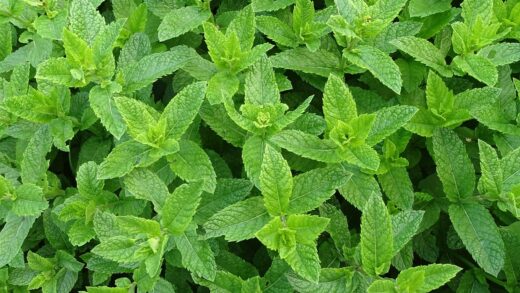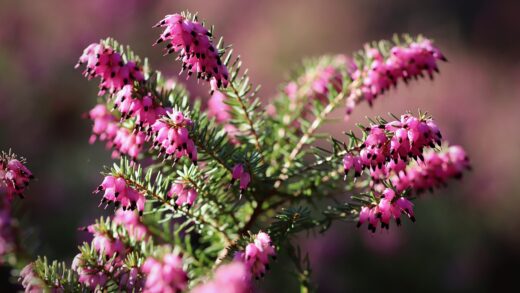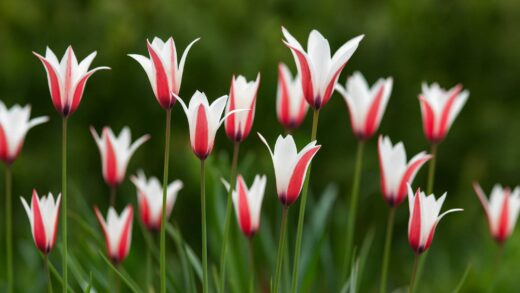Proper pruning is arguably the most vital technique for transforming a basil plant from a single, spindly stem into a lush, productive bush. It is a continuous process of strategic trimming that not only provides a steady supply of fresh leaves for the kitchen but also actively manipulates the plant’s growth habit for maximum yield. Far from being an act that harms the plant, regular and correct pruning is a form of communication, signaling to the basil that it should divert its energy from vertical growth and flowering into producing more lateral branches and, consequently, more of the desirable foliage. Mastering this skill is the key to unlocking a season-long, abundant harvest from each and every plant.
The fundamental principle behind pruning basil is based on a concept known as apical dominance. In its natural state, the main, central stem of the plant grows faster and more vigorously than the side shoots. This is because the terminal bud at the very top of this main stem produces hormones that suppress the growth of the buds lower down on the stem. When you prune the plant by snipping off this top-most growing tip, you remove the source of these suppressing hormones. This action breaks the apical dominance and sends a signal to the dormant buds located at the leaf nodes just below the cut, stimulating them to grow into new stems.
This process should be initiated early in the plant’s life. You should make your first pruning cut when the young basil plant is about six to eight inches tall and has developed several sets of true leaves. Using a pair of clean, sharp scissors or your fingertips, snip off the top portion of the main stem, making your cut just above a pair of leaves. It may feel counterintuitive to cut back a young plant, but this single, early cut is the most important one you will make. It sets the stage for a bushy structure by immediately forcing the plant to branch out into two new stems from the point of the cut.
From this point forward, pruning becomes a regular part of your harvesting routine. The goal is to always harvest from the top of the plant, rather than picking individual leaves from the bottom. Every two to three weeks, or whenever a branch has developed three or four sets of leaves, you should repeat the process of snipping that stem’s growing tip off, again making the cut just above a leaf node. Each time you do this, you will be encouraging that stem to branch out into two new ones. This exponential branching is what creates the dense, multi-stemmed bush that is the hallmark of a well-tended basil plant.
The technique of proper pruning
The specific location of your pruning cut is critical to achieving the desired result. You should always make your cut on a stem about a quarter of an inch above a leaf node. A leaf node is the point on the stem where a pair of leaves (or a single leaf, in some plants) emerges. Just above these leaves, in the little junction between the leaf stalk and the main stem (the leaf axil), are tiny dormant buds. These are the buds that will be stimulated into growth once the growing tip above them is removed. Cutting too far above the node will leave a section of stem that will likely wither and die back, which can be an entry point for disease.
More articles on this topic
When you are looking at a young basil plant, identify the central stem. Follow it up until you have counted at least three or four pairs of leaves. The cut should be made just above the second or third set of leaves from the bottom. By leaving a few sets of large, established leaves on the plant, you ensure that it still has enough foliage to continue photosynthesizing effectively and produce the energy needed for its recovery and new growth. This first cut on the main stem is the most important one for establishing a good structure.
As the plant grows and you continue to prune, the same principle applies to all the new stems that develop. Each time you harvest, you are also pruning. Instead of plucking individual large leaves from the sides or bottom of the plant, which does nothing to encourage new growth, you should always harvest by cutting off the top section of a stem. A typical harvest might involve cutting a stem back so that only one or two pairs of leaves remain on that particular branch. This ensures that every time you gather basil for a meal, you are also actively improving the plant’s productivity for the future.
Using the right tools is also important for the health of the plant. A pair of sharp, clean scissors or small pruning snips is ideal. A sharp blade makes a clean cut that will heal quickly, reducing the stress on the plant and minimizing the risk of infection. If you are just pinching off the very tender, new growing tips, you can often do so effectively with your fingernails. Regardless of the tool, the key is to be precise and to make a clean cut in the correct location to signal the plant to grow in the bushy, productive way you desire.
Preventing flowering (bolting)
One of the primary goals of a consistent pruning regimen is to prevent the basil plant from flowering, a process often referred to as bolting. For an annual plant like basil, flowering and setting seed is the culmination of its life cycle. Once this reproductive phase begins, the plant’s hormonal balance shifts dramatically. It diverts all of its energy away from producing new, succulent leaves and focuses it entirely on developing flowers and, ultimately, seeds. This hormonal shift has a direct and negative impact on the culinary quality of the herb.
More articles on this topic
When a basil plant begins to bolt, the flavor and texture of its leaves change for the worse. The production of the flavorful essential oils decreases significantly, and the leaves can often develop a bitter or off-taste. The texture also becomes tougher and less palatable. Therefore, to maintain a continuous supply of high-quality, flavorful leaves, it is imperative that you keep the plant in a vegetative state (its leaf-producing state) for as long as possible. Regular pruning is the most effective way to achieve this.
You must be vigilant and regularly inspect the tops of your basil plants for the first signs of flower bud formation. The flower buds typically appear in a dense, elongated cluster at the very tip of a stem. As soon as you spot one of these flower spikes beginning to form, you should pinch it off or snip it out immediately. Removing the flower bud sends a signal to the plant to revert back to its vegetative growth mode. If you let the flowers develop, the decline in leaf quality will be swift and often irreversible.
Environmental stressors can often accelerate a plant’s desire to bolt. Conditions such as extreme heat, drought, or becoming root-bound in a container can trigger a survival response in the plant, causing it to try to reproduce quickly before it dies. By providing consistent watering, adequate space, and perhaps some afternoon shade in very hot climates, you can reduce these stresses and help to delay the onset of flowering. However, even with the best care, a mature basil plant will eventually try to flower, making vigilant pruning your most reliable tool for extending the harvest.
Harvesting for maximum yield
The concepts of harvesting and pruning basil should be viewed as one and the same activity. The most efficient and productive way to harvest basil is to employ the pruning techniques that encourage bushy growth. This means you should never just pick off the large, individual leaves from the bottom or sides of the plant. While this provides you with a few leaves for immediate use, it does nothing to stimulate new growth and can, over time, lead to a tall, woody plant with leaves only at the top.
The correct method is to harvest from the top down. Identify a stem that has several sets of leaves and cut it back, making your cut just above a lower leaf node. This method provides you with a nice sprig of basil for your cooking, complete with leaves and a tender stem, while simultaneously pruning the plant correctly to encourage two new shoots to grow from where you made the cut. This “cut-and-come-again” method ensures that your plant becomes more productive with each and every harvest.
The frequency of harvesting plays a key role in the overall yield. Basil grows quickly in warm, sunny weather and benefits from being harvested often. A regular harvest every one to two weeks during the peak growing season will keep the plant in a constant state of productive growth and will prevent it from getting ahead of you and beginning to flower. A good rule of thumb is to not remove more than one-third of the plant’s total foliage at any single time. This ensures that the plant retains enough leaf surface area to recover quickly and push out new growth.
The best time of day to harvest basil is in the morning, after any dew has dried but before the sun becomes hot. At this time, the leaves are fully hydrated and the concentration of essential oils is at its peak, which translates to the best possible flavor and aroma. If you harvest in the heat of the midday, the leaves are more likely to wilt quickly, and some of their volatile aromatic compounds may have dissipated. By aligning your harvesting schedule with these principles, you can continuously enjoy the best quality basil while actively managing the plant for a long and productive season.
Rejuvenating a leggy plant
It is not uncommon for a basil plant, especially one that has not been pruned regularly or has been grown in insufficient light, to become leggy. A leggy plant is characterized by a tall, single stem with sparse leaves and large gaps between the leaf nodes. While not ideal, it is often possible to rejuvenate such a plant and encourage it to become bushier, provided you are willing to perform a rather drastic pruning, often called a hard prune. This technique can feel severe, but it is often the best chance to salvage the plant and restore its productivity.
To perform a hard prune on a leggy basil plant, you will need to cut the main stem back significantly. Identify a point on the main stem that is about four to six inches from the base of the plant. You want to make sure that there are at least one or two sets of healthy leaves or leaf nodes below the point where you plan to cut. Using sharp, clean shears, cut the entire top of the plant off at this point. This removes the dominant, leggy growth and forces the plant to rely on the dormant buds at the lower nodes to produce new growth.
After such a severe pruning, the plant will need some time to recover. It is essential to ensure it has optimal growing conditions during this period. Place the plant in a location where it will receive plenty of bright, direct sunlight. Water it appropriately, allowing the soil to dry slightly between waterings, and be careful not to overwater, as the plant will have much less foliage and will be transpiring less water. You can also provide a dose of half-strength liquid fertilizer to give it the nutrients it needs to fuel the new flush of growth.
Within a week or two, you should begin to see new shoots emerging from the leaf nodes below your cut. These new stems will form the basis of a new, bushier structure for your plant. As these new stems grow and develop their own sets of leaves, you can begin to prune them using the standard technique of pinching off their tips to encourage further branching. While a hard prune is a significant shock to the plant, it is often a highly effective way to correct leggy growth and give your basil a second chance at becoming a full and productive herb.


















